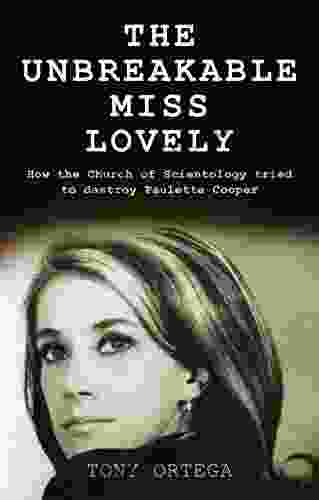Theory, History, and Laissez-Faire Model LVMI: A Comprehensive Guide

Laissez-faire, a French term meaning "leave alone," is an economic doctrine that advocates for minimal government intervention in the marketplace. Proponents of laissez-faire believe that the free market, when left to its own devices, can allocate resources more efficiently and effectively than government regulation. This article will explore the theory, history, and modern applications of the laissez-faire model, providing a comprehensive understanding of its origins, key principles, and ongoing relevance.
Theoretical Foundations of Laissez-Faire
The theoretical underpinnings of laissez-faire economics can be traced back to the writings of classical economists such as Adam Smith, David Ricardo, and Jean-Baptiste Say. These thinkers argued that the market is a self-regulating system governed by the "invisible hand," which ensures that the pursuit of individual self-interest leads to the maximization of societal welfare.
5 out of 5
| Language | : | English |
| File size | : | 2057 KB |
| Text-to-Speech | : | Enabled |
| Screen Reader | : | Supported |
| Enhanced typesetting | : | Enabled |
| Word Wise | : | Enabled |
| Print length | : | 274 pages |
| Lending | : | Enabled |
One of the core principles of laissez-faire is the belief in the power of competition. Laissez-faire economists contend that competition forces businesses to innovate, reduce costs, and provide consumers with better products and services. This, in turn, leads to economic growth, increased productivity, and a higher standard of living.
Another key principle is the belief in the sanctity of private property. Laissez-faire economists argue that secure property rights encourage individuals to invest, save, and engage in productive economic activity. They believe that government interference with private property rights, such as excessive taxation or regulation, can stifle economic growth and innovation.
Historical Evolution of Laissez-Faire
The laissez-faire model gained prominence during the Industrial Revolution in the 18th and 19th centuries. As economies began to industrialize, there was a growing belief that government intervention was hindering economic progress. Laissez-faire policies were embraced by many countries, particularly in Europe and North America, as a way to stimulate economic growth and promote industrial development.
During the late 19th and early 20th centuries, laissez-faire ideas came under increasing scrutiny. The rise of labor unions and the growing awareness of social inequality led to demands for government intervention to address market failures and protect workers' rights. The Great Depression of the 1930s further eroded faith in the self-regulating abilities of the free market, paving the way for the rise of Keynesian economics.
Laissez-Faire in the Modern Era
Despite the challenges it faced in the 20th century, laissez-faire remains a relevant economic doctrine in the 21st century. In recent decades, there has been a renewed interest in free market principles, particularly in developing countries. Laissez-faire policies have been credited with driving economic growth and reducing poverty in countries such as China, India, and Chile.
However, laissez-faire economics is not without its critics. Some argue that the free market can lead to excessive inequality, environmental degradation, and financial instability. They contend that government intervention is necessary to address these market failures and ensure that economic growth benefits all members of society.
LVMI: A Modern Interpretation of Laissez-Faire
In recent years, a new interpretation of laissez-faire has emerged, known as the "Low-Value Market Intervention" (LVMI) model. LVMI proponents argue that governments should only intervene in the economy when the benefits of ng so exceed the costs, and that the primary focus should be on removing barriers to entry and promoting fair competition.
LVMI advocates believe that a well-functioning market economy requires a level playing field for all participants. They advocate for policies that reduce regulatory burdens, streamline the tax code, and promote free trade. By creating an environment where businesses can thrive and competition can flourish, LVMI seeks to foster economic growth and prosperity.
Laissez-faire is a complex and multifaceted economic doctrine that has played a significant role in shaping the course of economic thought and policymaking. While its theoretical foundations and historical evolution provide important insights into its origins and development, the relevance of laissez-faire in the modern era remains a subject of debate.
The LVMI model offers a contemporary interpretation of laissez-faire that emphasizes the importance of limited government intervention while prioritizing the creation of a fair and competitive marketplace. As the world continues to face complex economic challenges, the principles of laissez-faire and LVMI are likely to remain at the forefront of economic discourse and policymaking. Understanding the theory, history, and modern applications of laissez-faire is essential for engaging in informed and productive discussions about the future of economic growth and prosperity.
5 out of 5
| Language | : | English |
| File size | : | 2057 KB |
| Text-to-Speech | : | Enabled |
| Screen Reader | : | Supported |
| Enhanced typesetting | : | Enabled |
| Word Wise | : | Enabled |
| Print length | : | 274 pages |
| Lending | : | Enabled |
Do you want to contribute by writing guest posts on this blog?
Please contact us and send us a resume of previous articles that you have written.
 Book
Book Novel
Novel Page
Page Chapter
Chapter Text
Text Story
Story Genre
Genre Reader
Reader Library
Library Paperback
Paperback E-book
E-book Magazine
Magazine Newspaper
Newspaper Paragraph
Paragraph Sentence
Sentence Bookmark
Bookmark Shelf
Shelf Glossary
Glossary Bibliography
Bibliography Foreword
Foreword Preface
Preface Synopsis
Synopsis Annotation
Annotation Footnote
Footnote Manuscript
Manuscript Scroll
Scroll Codex
Codex Tome
Tome Bestseller
Bestseller Classics
Classics Library card
Library card Narrative
Narrative Biography
Biography Autobiography
Autobiography Memoir
Memoir Reference
Reference Encyclopedia
Encyclopedia Vincent Chidindu Asogwa
Vincent Chidindu Asogwa W Glenn Griffin
W Glenn Griffin Thomas Greanias
Thomas Greanias Sue Fletcher Watson
Sue Fletcher Watson Venkat Venkatraman
Venkat Venkatraman C D Gorri
C D Gorri Steven H Strogatz
Steven H Strogatz Winona Laduke
Winona Laduke Lori Foster
Lori Foster Vanessa Collingridge
Vanessa Collingridge William A Barnett
William A Barnett Tony Bramley
Tony Bramley Elisabeth Elliot
Elisabeth Elliot Sheema Farooqi
Sheema Farooqi Kaitlyn Hill
Kaitlyn Hill Emmi Gee
Emmi Gee Zain E Asher
Zain E Asher Stjepan Sejic
Stjepan Sejic Trisha Yearwood
Trisha Yearwood John Hiker
John Hiker
Light bulbAdvertise smarter! Our strategic ad space ensures maximum exposure. Reserve your spot today!

 Ralph Waldo EmersonHero In Darkness: The Hunter Legacy 13 - A Captivating Saga of Darkness and...
Ralph Waldo EmersonHero In Darkness: The Hunter Legacy 13 - A Captivating Saga of Darkness and... Chance FosterFollow ·6.4k
Chance FosterFollow ·6.4k Carl WalkerFollow ·8.9k
Carl WalkerFollow ·8.9k Noah BlairFollow ·10.4k
Noah BlairFollow ·10.4k Connor MitchellFollow ·15.8k
Connor MitchellFollow ·15.8k Yasunari KawabataFollow ·15.4k
Yasunari KawabataFollow ·15.4k Scott ParkerFollow ·4.2k
Scott ParkerFollow ·4.2k Darren NelsonFollow ·11.5k
Darren NelsonFollow ·11.5k Kendall WardFollow ·2.7k
Kendall WardFollow ·2.7k

 Donald Ward
Donald WardUnveiling the Enthralling World of "Belong to the Baddest...
In the vibrant and...

 José Martí
José MartíCrowned Crows of Thorne Point: A Literary Odyssey into...
In the realm of literary masterpieces,...
5 out of 5
| Language | : | English |
| File size | : | 2057 KB |
| Text-to-Speech | : | Enabled |
| Screen Reader | : | Supported |
| Enhanced typesetting | : | Enabled |
| Word Wise | : | Enabled |
| Print length | : | 274 pages |
| Lending | : | Enabled |


















